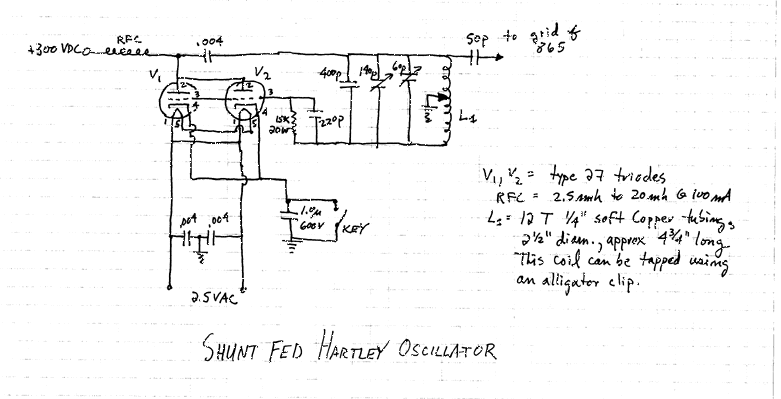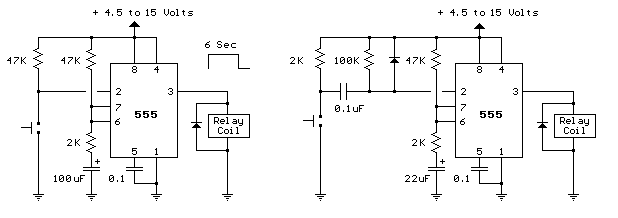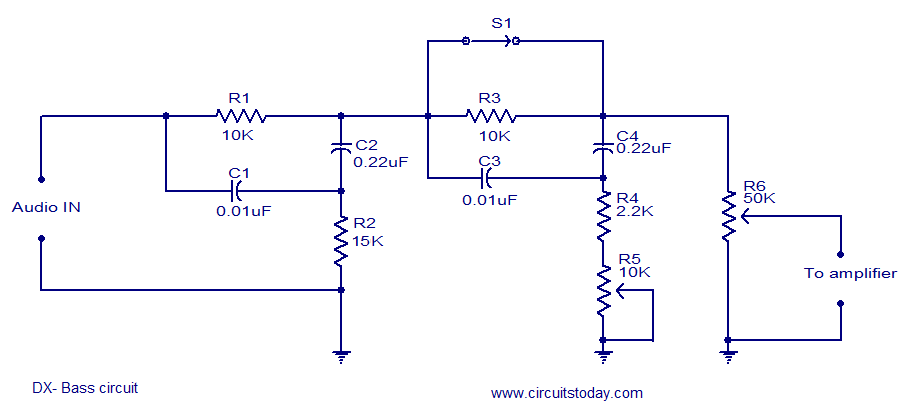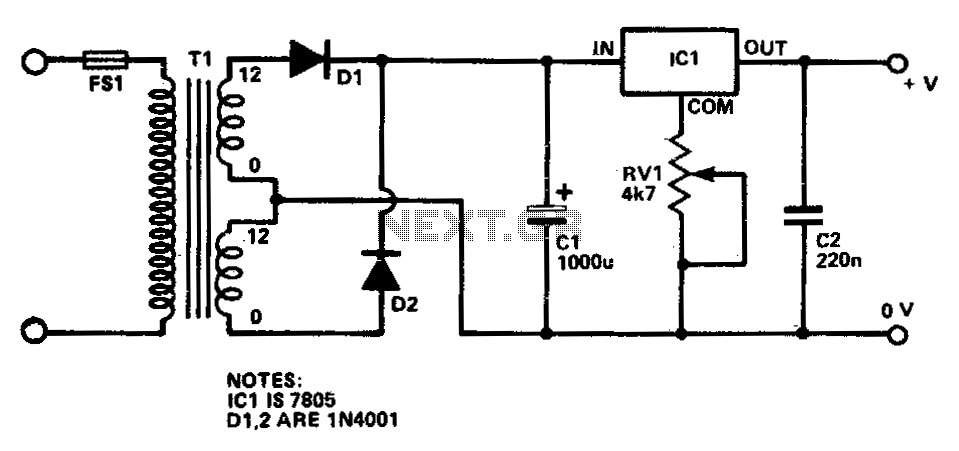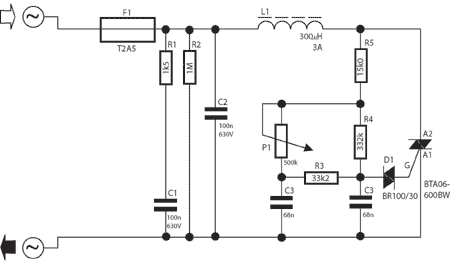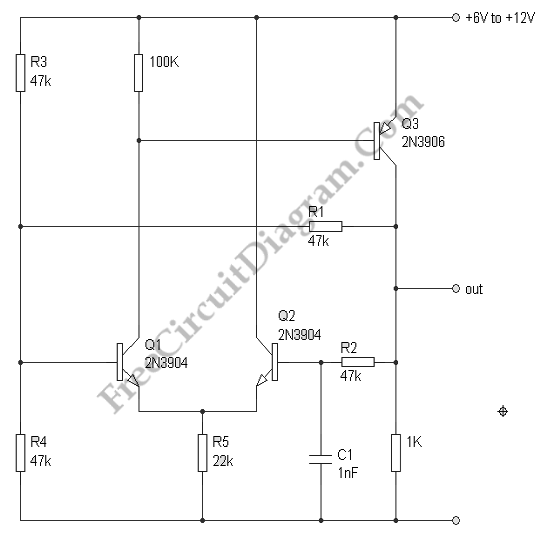
Circuit of power fm transmitter transistor 2n2218 audio wireless 1KM
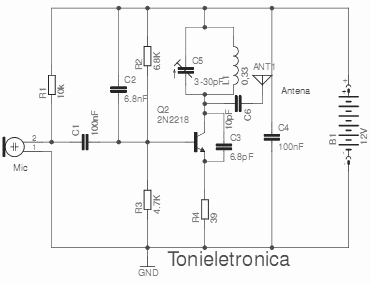
This small transmitter can reach distances of more than 1 km under favorable transmission conditions. Modulation can be achieved using a microphone, such as an electret microphone, or another audio source. The transmitter includes a coil made of 5 turns of enameled wire (22 AWG) with a diameter of 1 cm, without a core. It is important to use ceramic capacitors. The antenna should measure between 15 to 40 cm. For transmission, connect an FM receiver nearby at half volume on a free frequency (one that is not currently in use). A wooden or plastic tool can be used to adjust the CV screw to capture the strongest signal from the transmitter, as there may be interference from spurious signals. If difficulties in tuning arise, the coil can be removed and rewound with more or fewer turns. Attention should be paid to the pinout of the transistor 2N2218. Mic1 represents a two-terminal electret microphone, and resistor R1 is used to polarize the microphone; it may be necessary to adjust the value of R1 to match the microphone, with values ranging from 1k to 10k being suitable for testing. It is recommended to use a fiberglass board, which is appropriate for high-frequency applications. For improved frequency stability, it may be necessary to connect the antenna to the second turn of the coil by soldering the wire used as the antenna to the second turn of the coil L1.
The described transmitter circuit operates on the principle of amplitude modulation (AM) or frequency modulation (FM), depending on the configuration of the audio input. The use of an electret microphone allows for effective audio signal capture, which is then modulated onto a carrier frequency. The 22 AWG enameled wire coil, consisting of five turns, serves as the inductor for the oscillator circuit, which is crucial for generating the RF signal. The diameter of the coil is specified to ensure optimal inductance and resonance at the desired frequency.
Ceramic capacitors are employed in the circuit due to their stability and reliability in high-frequency applications. The choice of antenna length is critical, as it influences the range and efficiency of the transmission. The recommended length of 15 to 40 cm is based on the operating frequency and the physical characteristics of the antenna, which should be matched to the transmitter's output for maximum performance.
The FM receiver must be tuned to a frequency that is not occupied by other radio signals to minimize interference. The adjustment of the CV screw allows for fine-tuning of the transmitter's output frequency, ensuring that the signal can be optimally received. The use of a wooden or plastic tool for this adjustment helps avoid any additional capacitance that could affect tuning.
The transistor 2N2218 is a critical component in the circuit, functioning as the amplifier for the modulated signal. Proper attention to the pinout configuration is necessary to ensure correct operation. The resistor R1 is integral to the microphone's operation, providing the necessary biasing. The ability to adjust R1 allows for compatibility with different microphone models, ensuring that the audio signal is appropriately amplified before modulation.
Utilizing a fiberglass board for mounting the components enhances the circuit's performance at high frequencies, reducing potential losses and maintaining signal integrity. The suggestion to connect the antenna to the second turn of the coil can further stabilize the frequency output, ensuring consistent transmission quality. This detailed understanding of the circuit components and their interactions is essential for successful transmitter design and implementation.This small transmitter can arrive the more than 1 km in favorable conditions of emission. The modulation can be made so much with a microphone, for an electrets microphone, or other audio source. The 5 turns of enameled thread 22 AWG, with diameter of 1 cm without nucleus. Look at the capacitors that it should be ceramic. The antenna should posses s from 15 to 40 cm. Para the transmission it ties a receiver of FM (radio) in the proximities to half volume in a free frequency (that there is not any radio operating), with a wood or plastic key, rotate the screw of CV to capture the sign more fort of the transmitter, because a spurious sign can be captured. If it has difficulties of fittings, remove the coil and wind her again with more or less it turns. Look at pinage of the transistor 2n2218. Mic1 is a microphone of electrets of two terminals, THE resistor R1 makes the polarization of the microphone, perhaps it is necessary to alter the value of R1 to adapt to your microphone, values of 1k up to 10k can be tested.
Preferably use plate of glass fiber, that is the appropriate for high frequency. Perhaps for better frequency stability to be necessary to place the antenna on second turn of the coil, weld the thread piece used as antenna second it turn of the coil L1. 🔗 External reference
The described transmitter circuit operates on the principle of amplitude modulation (AM) or frequency modulation (FM), depending on the configuration of the audio input. The use of an electret microphone allows for effective audio signal capture, which is then modulated onto a carrier frequency. The 22 AWG enameled wire coil, consisting of five turns, serves as the inductor for the oscillator circuit, which is crucial for generating the RF signal. The diameter of the coil is specified to ensure optimal inductance and resonance at the desired frequency.
Ceramic capacitors are employed in the circuit due to their stability and reliability in high-frequency applications. The choice of antenna length is critical, as it influences the range and efficiency of the transmission. The recommended length of 15 to 40 cm is based on the operating frequency and the physical characteristics of the antenna, which should be matched to the transmitter's output for maximum performance.
The FM receiver must be tuned to a frequency that is not occupied by other radio signals to minimize interference. The adjustment of the CV screw allows for fine-tuning of the transmitter's output frequency, ensuring that the signal can be optimally received. The use of a wooden or plastic tool for this adjustment helps avoid any additional capacitance that could affect tuning.
The transistor 2N2218 is a critical component in the circuit, functioning as the amplifier for the modulated signal. Proper attention to the pinout configuration is necessary to ensure correct operation. The resistor R1 is integral to the microphone's operation, providing the necessary biasing. The ability to adjust R1 allows for compatibility with different microphone models, ensuring that the audio signal is appropriately amplified before modulation.
Utilizing a fiberglass board for mounting the components enhances the circuit's performance at high frequencies, reducing potential losses and maintaining signal integrity. The suggestion to connect the antenna to the second turn of the coil can further stabilize the frequency output, ensuring consistent transmission quality. This detailed understanding of the circuit components and their interactions is essential for successful transmitter design and implementation.This small transmitter can arrive the more than 1 km in favorable conditions of emission. The modulation can be made so much with a microphone, for an electrets microphone, or other audio source. The 5 turns of enameled thread 22 AWG, with diameter of 1 cm without nucleus. Look at the capacitors that it should be ceramic. The antenna should posses s from 15 to 40 cm. Para the transmission it ties a receiver of FM (radio) in the proximities to half volume in a free frequency (that there is not any radio operating), with a wood or plastic key, rotate the screw of CV to capture the sign more fort of the transmitter, because a spurious sign can be captured. If it has difficulties of fittings, remove the coil and wind her again with more or less it turns. Look at pinage of the transistor 2n2218. Mic1 is a microphone of electrets of two terminals, THE resistor R1 makes the polarization of the microphone, perhaps it is necessary to alter the value of R1 to adapt to your microphone, values of 1k up to 10k can be tested.
Preferably use plate of glass fiber, that is the appropriate for high frequency. Perhaps for better frequency stability to be necessary to place the antenna on second turn of the coil, weld the thread piece used as antenna second it turn of the coil L1. 🔗 External reference
